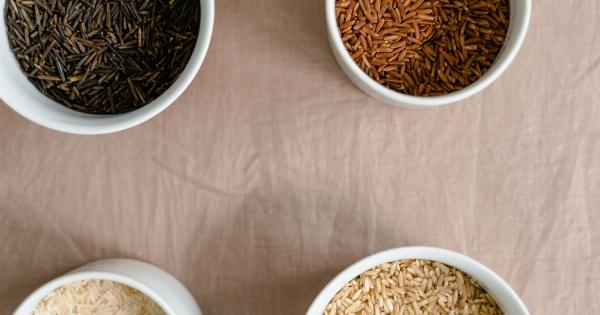We all know that maintaining a healthy diet is crucial for our overall well-being. However, what many people overlook is the fact that how we consume certain foods can also impact their nutritional value and potential health benefits.
In this article, we will discuss five common foods that are often eaten incorrectly and provide tips on how to enhance their flavor and maximize their nutritional value.
1. Avocado
Avocados are a versatile and nutrient-dense fruit that can be enjoyed in many ways. However, many people make the mistake of eating only the flesh and discarding the seed and skin.
The truth is that both parts of the avocado offer numerous health benefits.
To eat an avocado correctly, start by cutting it in half lengthwise. Then carefully remove the seed by gently scooping it out with a spoon. Next, peel off the skin or scoop out the flesh, depending on your preference.
Remember, the dark green layer closest to the skin contains valuable antioxidants, so try to include it in your dish.
2. Eggs
Eggs are a staple in many households due to their versatility and nutritional content. However, cooking them improperly can significantly reduce their nutrient availability.
One common mistake is overcooking eggs, which can lead to the destruction of essential vitamins and minerals.
To properly cook eggs, it’s best to avoid high temperatures that can denature the proteins. Try opting for poached or soft-boiled eggs instead of frying or hard-boiling them.
This way, you will retain more nutrients and enjoy a tastier, creamier texture.
3. Broccoli
Broccoli is a cruciferous vegetable renowned for its health benefits, including its potential to reduce the risk of chronic diseases.
However, many people tend to overcook broccoli, turning it into a mushy consistency and diminishing its nutritional value.
To retain the nutrients and texture of broccoli, it is best to lightly steam or blanch it. This cooking method will help preserve the vibrant green color and allow the vegetable to maintain its natural crunch.
Avoid boiling broccoli for extended periods to prevent nutrient loss.
4. Garlic
Garlic is a popular ingredient known for its distinct flavor and potential health benefits, such as boosting the immune system and reducing the risk of heart disease. However, consuming garlic incorrectly can limit its beneficial properties.
When cooking with garlic, it is essential to let it sit for about ten minutes after crushing or chopping it. This brief waiting period allows the enzymes in garlic to activate, which enhances the production of beneficial compounds.
Additionally, adding garlic towards the end of the cooking process can help retain its flavor and health benefits.
5. Brown Rice
Brown rice is a whole grain that offers more fiber, vitamins, and minerals compared to its white rice counterpart. However, many people struggle with cooking brown rice correctly, often resulting in undercooked, sticky, or mushy grains.
To cook brown rice perfectly, start by rinsing it thoroughly to remove excess starch. Then, for every cup of rice, use about two cups of water. Bring the water to a boil, add the rice, and reduce the heat to a simmer.
Cover the pot and let it cook undisturbed for around 45 minutes. This method will ensure fluffy and well-cooked brown rice.
Conclusion
It’s important to remember that making small changes in how we consume certain foods can significantly impact their taste, nutritional value, and health benefits.
By eating foods like avocado, eggs, broccoli, garlic, and brown rice correctly, we can amplify their positive effects on our well-being.




























